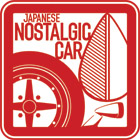
Moving right along from the T360 and T500 trucks, Honda’s next foray into four-wheeled vehicles was the S500 roadster. It should be remembered that at this point Honda was already a massively successful international motorcycle manufacturer, mainly as a result of the Honda Cub: a cheap, simple, robust 50cc bike that is made to this very day and is the most popular vehicle ever made.
So the S500 was as much a treat for company founder Soichiro as anything else, and its sporty front-engined, rear wheel drive convertible layout predates the S2000 by some 35 years. Mr Honda was quite the anglo-phile when it came to cars, and so the S600 displays more upright influences from British sports cars of the day, rather than the more svelte and womanly curves of 60s Italian sportsters.

In terms of technology, the S500 could hardly build on the exotic specification of the T360/500 trucks, so it is really more of the same: which is to say, a 4 cylinder, DOHC, all-alloy, quad bike carbed, dry sumped engine and with a roller bearing crank. Racing cars of the day would be lucky to have such exotic specifications and reflected Honda’s success in the early 60s as a racing engine supplier. Honda engined Brabhams dominated Formula Two during that period, so it must have been with great pride that the Honda engineers released a roadcar with largely the same spec.
It’s also worth remembering that Honda bravely entered Formula One in the early 60s with its own engine and chassis, winning the first ever F1 Grand Prix for a Japan marque in 1964 with Richie Ginther at the wheel.
So when the S500 was released onto the Japanese market in 1963, Honda was already a hi-credibility nameplate in racing car circles, and so the engine reflects that heritage. Rather than spin on conventional shell bearings fed by high oil pressure, the S500’s crank is actually in separate pieces, and has to be assembled together around a set of roller bearings for less friction and more rpm. Roller bearings need less oil pressure so the engine oil pressure is a scant 2psi only. Typical of a Honda for its time, the redline starts at 9500rpm and peak power is produced at a lofty 8500rpm. Of further interest is a Land-Rover style centrifugal oil filter which spins the dirt out of the oil and sucks the clean oil from the middle.

And rather like the T360/500 the S500 never really delivered the performance its specifications promised, largely due to weight. Although the size of a tiny Kei-car, the S500 is 715kg (even though its bodywork was partially aluminium), quite a bit heavier than the little T500 truck, and so even though it has an extra 5kw over the T500, the 33kw S500 is hardly fast, topping out at 130km/h. Chassis was a Lotus Elan syle backbone (Mr Honda had Lotuses) with a strange chain drive for the rear wheels. Ahead of the rear wheels was a live axle fixed to the chassis. At each end of the axle were motorcycle-style chains, which ran in boxes which acted as simple trailing arms.

The S500 was quickly replaced by the 42kw S600, which was superceded by the S800 a few years later. The S800 was productionised for lower cost, and so it ran a hefty 60’s style ladder chassis and a normal rear axle. The engine was enlarged to 800cc and 52kw, but weight went up to 755kg.

In its day, the S600/800 was sold all around the world, and gained notoriety mainly because of its 10,000rpm engine, which was almost exactly twice the rev range of contemporary British luggers like the MGs and Triumph roadsters. Performance was comparable with the Austin-Healey Sprite/MG Midget of the era, but magazine reports from the period report that the handling was not very good, being too soft and badly set up.

Although the S500/600/800 satisfied Mr Honda’s obsession with high tech, it was hardly a sales success, with only 11,000 sold in 6yrs. Compare that to the several hundred thousand MG Midgets and Frogeye Sprites sold. Honda lost money on every single S500/600/800, so it was an expensive indulgence.
Honda’s motorcycle division was enormously profitable and Soichiro Honda’s forays into four wheeled transport were beginning to look like a commercial failure. At this point, Mr Honda was pushing 60, and the day to day running of the company was already managed by much younger men, who were beginning to become impatient with the company founder.
Old Man Honda would get one more chance at designing cars….which leads us neatly to our next car.






Great article Kev! Love the old S-cars. Neko Publishing released an awesome book about the range which I’m sure would be a great read, if I could read Japanese.
Let’s not forget the S360 and S600/S800 Coupes too! The convertibles were always prettier tho…
I do have some pics of the fastback/coupe but they just weren’t as nice… 🙂
Counting coupes and roadsters 600 and 800, total production was about double figure quoted above.
The 800 coupes are great fun to drive and sound different to roadster as hear less exhuast noise and more snarl from the engine!